I have been travelling on my own most of the time as my friends are still working. This time I was delighted to travel with three old friends. It turned out to be a great blessing as I suddenly had back pains and could hardly carry my suitcase. I abandoned my plan to make a second visit to Huangshan黄山. Instead I had a most relaxing 8-day holiday in Nanjing 南京 (in Jiangsu江苏), Tunxi 屯溪, Hongcun 宏村 and Xidi 西递 (in Anhui 安徽) and Hangzhou 杭州 (in Zhejiang 浙江).
October 9 (Sunday): Kunming 昆明 (Yunnan 云南) – Nanjing 南京 (Jiangsu 江苏)
Lawrence took me to the airport after lunch. I walked with some difficulties and could not lift my suitcase. My flight was delayed and I arrived at the Nanjing Airport after 8pm. As my friends, Kai and HM (both are my classmates from the University of Hong Kong) and Elaine (HM’s wife) would be arriving at 8:45pm, I simply waited for them at the arrival hall so that we could take a taxi together. We stayed in a newly opened hotel which is tastefully decorated and had a nice late supper with seafood for less than ¥150. A great way to start a holiday!
October 10: Nanjing 南京
Nanjing is the capital of Jiangsu Province which has a total area of 102,600 square kilometres and a population of 78.6 million (2010). Jiangsu is prosperous with a GDP of US612 billion and a GDP per capita of almost US$8,000. The province is very flat and low-lying with plains covering almost 70% of its area. The Grand Canal of China cuts through the province from north to south. It has a well-developed irrigation system which has earned it the name “Water Town” and the city of Suzhou苏州 is nicknamed “Venice of the Orient”.
Nanjing was again the capital of the Taiping Kingdom 太平天国 (1850-1864) and was known as Heavenly Capital 天京. It was invaded by the British troops during the First Opium War which was ended by the Treaty of Nanking in 1842 when the island of Hong Kong was ceded to Britain. After the successful Revolution led by Dr Sun Yat-sen overthrowing the Qing Dynasty on October 10,1911, the new regime set up its government in Nanjing which became the capital of the Republic of China under Chang Kai-shek in 1927 till Chang’s flight to Taiwan in 1949.
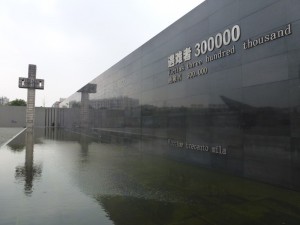
Nanjing Massacre Memorial Hall - In December 1937, Japan occupied China which marked the beginning of the Second Sino-Japanese War. Japanese troops carried out the most brutal massacre for six to eight weeks starting on December 13, 1937 (This is also known as the “Rape of Nanking’).
Nanjing with a population of 5 million has been a cultural centre for centuries. Poets gathered in the Tang and Song Dynasty唐宋两代to compose poems reminiscent of its luxurious past. During the Ming and Qing Dynasty 明清两代, it was the official imperial examination centre. Nanjing was the home of Admiral Zheng He郑和 (1371-1433) who was the greatest navigator of his time.
As we were in Nanjing on the centennial of the 1911 Revolution, we decided to go to Dr Sun Yat-sen Mausoleum 中山陵 at the Purple Mountain 紫金山 where a ceremony would be held to commemorate this important occasion in Chinese history. But we arrived too late and the ceremony was over. There is so much to see at the Purple Mountain scenic area and we spent some five hours but managed only to visit three main attractions.
Ming Xiaoling Mausoleum, a World Heritage SiteMing Xiaoling Mausoleum 明孝陵, the tomb of Hongwu Emperor located at the foothill of the Purple Mountain, is a World Heritage Site. Building work started in 1381 and was completed in 1405. The 1800-metre-long winding sacred way神道 has two sections, namely the Elephant Road 石象路and the Wengzhong Road翁仲路. The former has 12 pairs of six animals (lions, xiezhi, camels, elephants, qilin and horses). There is a stele of homage to the Hongwu Emperor 洪武帝by the Qing Kangxi Emperor康熙皇帝. The styles of the buildings are traditional but simple in bright yellow and red colours. It is a blessing that the tomb has not been opened!
Dr Sun Yat- sen Mausoleum situated at the second peak of the Purple Mountain, in my view, is the most impressive and majestic mausoleum of its kind in China. Dr Sun, a native son of Zhongshan 中山 in Guangdong was born in 1866. He studied in the medical school of the University of Hong Kong, travelled to Japan and the States for the revolutionary cause and finally overthrew the Qing Government in 1911. He has been revered as the ‘Father of Modern China” and died in 1925.
Construction of the mausoleum started in 1926 and was completed in 1929. The mausoleum blends the styles of traditional imperial tombs and modern architecture. There is a three-tier stone-stand on which a huge bronze tripod鼎, an ancient Chinese vessel symbolising power, stands. The 480-metre-long and 50-metre-wide stairway with 392 stairs leads to the vault. Four characters written by Dr Sun,” Tian Xia Wei Gong” 天下为公 meaning “What is under the Heaven is for all” represents his novel ideals. Inside the sacrificial hall which measures 30-metres long, 25-metres wide and 29-metres high is a 4.6-metre high statute of Dr Sun sitting. The vault wherein lies the sarcophagus of Dr Sun but it was closed that day.
We went to the Confucius Temple 夫子庙 which was once the Imperial Examination Hall. It is close to the Qinhuai River 秦淮河,a branch of the Yangtze River 长江which is the largest river in Nanjing capturing the imagination of the local people as well as visitors. The whole area is noisy, full of restaurants and shops with tasteless and right neon lights. The romantic and charming atmosphere at the river that I remember rom my last visit in early 1990s has gone forever.
October 11: Nanjing 南京(Jiangsu江苏) – Tunxi屯溪 (Anhui安徽)
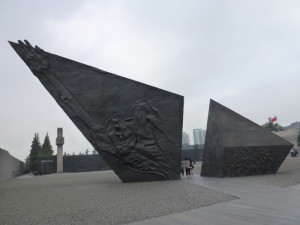 Tunxi is about 200km from Nanjing. We intended to hire a car. But as it would cost some ¥2000 for a short journey of three hours, we decided to take the train which cost less than ¥50 a ticket. As the train would be leaving at 3:55pm, we spent the morning visiting the Nanjing Massacre Memorial Hall 侵华日军南京大屠杀遇难同胞纪念馆 which is built near the “pit of ten thousand corpses” 万人坑.
Tunxi is about 200km from Nanjing. We intended to hire a car. But as it would cost some ¥2000 for a short journey of three hours, we decided to take the train which cost less than ¥50 a ticket. As the train would be leaving at 3:55pm, we spent the morning visiting the Nanjing Massacre Memorial Hall 侵华日军南京大屠杀遇难同胞纪念馆 which is built near the “pit of ten thousand corpses” 万人坑.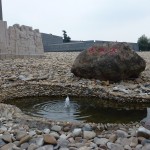
Nanjing fell to the Imperial Japanese Army on December 13, 1937 and the army committed countless atrocities including rape, arson and mass executions during the first six to eight weeks where some 300,000 Chinese were killed. The memorial site is large including a memorial hall, a museum, many outdoor exhibits and statutes, scripture, relief carving, tablets, a wall with names of victims, an atonement tablet, a memorial walkway, and a display hall with remains of over 200 skeletons. We spent over an hour in the tomb-like exhibition hall which is built half underground and contains some 1000 items related to the massacre. We looked at the exhibits with a heavy heart and deep sorrow: it is a gruesome experience. Chinese people can forgive but not forget what has happened.
We brought plenty of food and had a good time on the train. Elaine bought a tiny set of mahjong and we played the game for several hours. Elaine was the winner and I was the biggest loser. We arrived in Tunxi around 9:30pm and stayed at the Tunxi Lodge which happens to be run by a Hong Kong company named Silk Road Resort Company. It is a nice boutique hotel housed in traditional buildings with character. We had a late supper and did not go to bed till mid-night!
October 12: Tunxi屯溪
Tunxi in the rainI spent the next two days in Anhui Province which has an area of 139,400 square kilometres and a population of 59.9 million (2010). Its GDP reached US$181billion and a GDP per capita of ¥16,391. The province has a diverse topography with plains in the north and central regions with mountains in the southwestern and outheastern parts. It boosts two World Heritage Sites namely Huangshan黄山 and the ancient villages at Hongcun宏村 and Xidi西递.
Because of the back problem, I decided to stay in Tunxi while Elaine, HM and Kai went to Huangshan. Anhui was traditionally the region known for its scholars, painters and officials. Hence the century-old cobble stone main street is lined with shops selling paintings, antique furniture and the four essential items for writing and painting 文房四宝 (namely paper, ink, brush and ink-slab). The buildings are well-preserved without the tasteless neon lights and intrusive and ugly shop signs.
I went to the new grand theatre to see a performance whose theme is to show the outstanding cultural and natural beauty of Anhui through dance, drama, singing and visual effects. I am sorry to say the performance is not aesthetic or artistic. The music is too loud and the costumes are glittering and tasteless.
October 13: Tunxi 屯溪 – Hongcun 宏村 – Xidi西递
Anhui, among other things, is famous for its villages built in the Ming and Qing Dynasties. The most notable villages at Hongcun and Xidi have been listed on the World Heritage List. Their street plan, architecture and decoration, integration of houses with comprehensive water systems are unique surviving examples. They are regarded as graphic illustrations of a type of human settlement created during a feudal period and based on a prosperous trading economy. Their buildings and street atterns also reflect the socio-economic structure of a long-lived settled period of Chinese history.
I took a private car and planned to visit Chengkan 呈坎 on my way to Xidi. The weather turned bad with thunder and lightning. Unfortunately, the driver took the wrong turn on the highway. I therefore went to Hongcun and spent over two hours in pouring rain in the village. But there were still hundreds of visitors.
Hongcun宏村
The village was founded in 1131 by, Wang Yanji汪彦济, descendant of the Han general Wang Wenhe王文和. Around 1405, on the advice of geomancers, a channel was dug to bring fresh water to the village from the West Stream西溪. The village is arranged in the shape of an ox with the nearby hill 雷岗山interpreted as its head and two trees standing on it as its horns. The four bridges across the Jiyin Stream are seen as its legs while the houses of the villages form the body. The village’s water supply system with open watercourse running through all the houses in the entire village was completed in the 17th century into the picturesque Moon Pond 月塘and the South Lake南湖.
The architecture and carvings of some 150 houses dating back to the Ming and Qing Dynasties are said to be the best of their kind in China. There are some beautiful public buildings notably the South Lake Academy 南湖书院 (1814) and the Hall of Meritorious Deeds 敬德堂 (1888).
Xidi西递
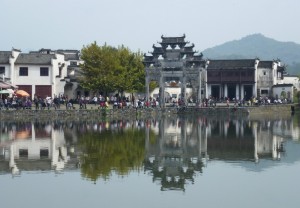 Xidi, originally called Xichuan 西川meaning the west river, was first built during the Huangyou era of Emperor Renzong (1049-1053) of the Song Dynasty宋仁宗皇祐年间. It owes its growth to the Hu family 胡氏家族 from Wuyuan 婺源, who adopted a son of the Tang Emperor Zhaozong 唐昭宗 (888-904) after the Emperor was forced from his throne in 904. One of the descendants moved his family to Xidi.
Xidi, originally called Xichuan 西川meaning the west river, was first built during the Huangyou era of Emperor Renzong (1049-1053) of the Song Dynasty宋仁宗皇祐年间. It owes its growth to the Hu family 胡氏家族 from Wuyuan 婺源, who adopted a son of the Tang Emperor Zhaozong 唐昭宗 (888-904) after the Emperor was forced from his throne in 904. One of the descendants moved his family to Xidi.The village surrounded by mountains on all sides is dominated by a main road running in an east – west direction. The main street is joined by many narrow alleys. Today, there are still over 120 well-preserved wooden residences from the Ming and Qing dynasties with beautiful wooden carvings. The timber-framed buildings all have black-tiled roof, high white-washed brick walls and very small windows for security reasons.
October 14: Xidi西递 – Tunxi屯溪 – Hangzhou杭州, Zhejiang浙江
I had a wonderful sleep and got up around 6:30am. Though it was too late for sunrise, I walked to a vantage point and saw the heavenly and beautiful village in mist. I strolled along the quiet alleys till 9am when I returned to the lodge for breakfast.
After a rest, I set off again only to find the narrow streets filled with visitors and art students doing their sketches. I visited some magnificent and elegant mansion houses and ancestral halls.
Around 1:30pm, I met up with Elaine, HK and Kai who arrived after their 2-day stay in Huangshan and morning visit to Hongcun. As our bus would be leaving for Hangzhou from Tunxi at 4:10pm, they could only have a quick tour of Xidi and we headed back to Tunxi at 2:30pm. It was a pity they could not have spent more time in this beautiful village.
We arrived in Hangzhou before 7pm and went to an old street of Song period style 宋城老街for dinner. As it was Elaine’s birthday, we had a hearty meal with local dishes followed by an ice-cream party!
October 15: Hangzhou杭州
Hangzhou is the capital of Zhejiang Province which has an area of 101,800 square kilometres and a population of 54.4 million (2010). The GDP and GDP per capita reached US$402 billion and US$6,490 respectively. Some 70% of the province is covered by hills.
Hangzhou with a population of 8.7 million is one of top destinations in China because of its historical relics and the beautiful West Lake 西湖. It was the capital of the Southern Song Dynasty 南宋 (known as Linan临安) in 1123 till the Mongol invasion in 1276.
The West lake Cultural landscape, a World Heritage Site covering an area of 33 square kilometres, comprises numerous temples, pagodas, gardens and ornamental trees, causeways and artificial islands. The lake divided by three causeways namely Sudi苏堤, Baidi白堤 and Yanggongdi扬公堤and surrounded on three sides by “cloud- capped hills” is an outstanding example of cultural landscape that displays with great clarity the ideals of Chinese landscape aesthetics. The lake famed for the “Ten scenes of Xihu” 西湖十景 has inspired poets, scholars and artists since the 9th century.
We planned to visit Lingyin Temple 灵隐寺 and Yuewang Temple岳王庙. The traffic was horrible and we got stuck for almost an hour. That taxi driver told us to get off to take a bus to the Lingyin Temple. Then a man asked us to take his car to the Lingyin Temple and Yuewang Temple for ¥80. We thought it was very cheap and discovered the reason later.
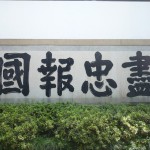 Our first stop was Yuewang Temple岳王庙 which was built to commemorate a nation hero of the Southern Song Dynasty. Yue Fei 岳飞 (1103-1142) a patriotic general leading the defense of the dynasty against invaders from the Jin Dynasty 金朝 in northern China was put to death by the government.
Our first stop was Yuewang Temple岳王庙 which was built to commemorate a nation hero of the Southern Song Dynasty. Yue Fei 岳飞 (1103-1142) a patriotic general leading the defense of the dynasty against invaders from the Jin Dynasty 金朝 in northern China was put to death by the government.
On the way to the Lingyin Temple, the driver took us to three shops including a silk outlet, a longjing 龙井tea house and a shop selling cultured pearls. He got ¥20 for each shop for bringing four perspective customers irrespective whether we purchased anything or not. The traffic was very bad. When he dropped us off at the temple, he
asked us to pay him ¥40 and take another taxi back to town. (In this way, he made ¥100 in the morning).
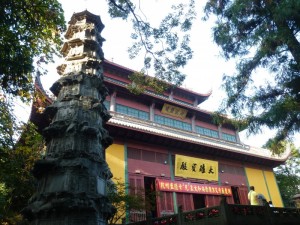 Lingyin Temple 灵隐寺is believed to be the oldest temple in Hangzhou. The place has undergone extensive redevelopment since my last visit. I could no longer find peace and tranquility that had enchanted me on my last visit as the place was swarmed with tourist and worshippers. I cannot bear the noisy crowd and the burning of enormous joss-sticks.
Lingyin Temple 灵隐寺is believed to be the oldest temple in Hangzhou. The place has undergone extensive redevelopment since my last visit. I could no longer find peace and tranquility that had enchanted me on my last visit as the place was swarmed with tourist and worshippers. I cannot bear the noisy crowd and the burning of enormous joss-sticks.
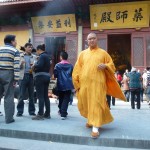 On our way back to Hangzhou, we ran into another problem driver. At first, he agreed to take nine passengers for ¥50 each. He kept complaining about the traffic jam
On our way back to Hangzhou, we ran into another problem driver. At first, he agreed to take nine passengers for ¥50 each. He kept complaining about the traffic jam
and asked us to pay more on the way. At one time, he tried to off-load us at the silk
outlet!
October 16: Hangzhou – Hong Kong
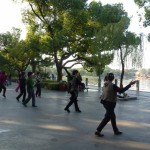 West Lake is best to be seen in the morning and at sunset. We arrived at the lakeside planning to hire a private boat for the morning. The owners were so rude that we decided to take the public boat which charges less than ¥50 per head.
West Lake is best to be seen in the morning and at sunset. We arrived at the lakeside planning to hire a private boat for the morning. The owners were so rude that we decided to take the public boat which charges less than ¥50 per head.
We first went to Xiaoyingzho, a large artificial lake which is the setting for one of the ten famous scenes of West Lake which is known as the scenesi.e. “Three Pools Mirroring the Moon” 三潭印月. There were already hundreds of noisy tourists and we took a boat to the Solitary Hill 孤山where there are remnants of a Qing Palace and the Zhejiang Museum. Then we walked along the Baidi白堤 and had brunch on the roof-top overlooking the lotus pond and the Baidi. This is an
area where I do not see the monstrous high-rise buildings and have a feel of enchanting Hangzhou that I adorn.
After lunch, we had a most frightening time in finding a taxi to the hotel. It was like a battle! We asked the taxi to wait at the hotel and travelled all the way to the airport for some ¥130. The Dragon Air flight to Hong Kong departed on time and we arrived in Hong Kong before 6pm.
Remarks
I left Hong Kong on July 8 and am glad to be home after having spent some 100 days on the road. After my wonderful journey in Laos, Yunnan, Tibet and Sichuan, this short 8-day trip with good old friends is wonderful. This is especially memorable when I had a troubled back and a wasp-stung leg.
Nanjing, a city famous for its tombs, is worth visiting. I visited the Holocaust Memorial and the Jewish Museum in Berlin last summer. As Chinese, I find my visit to the Nanjing Massacre Memorial Hall a most gruesome experience. I looked at the
exhibits and the skeleton display hall with deepest sorrow. It is part of history. People should learn from history and learn to forgive. Chinese can forgive but will never forget the rape of Nanjing. Also there must be no more atrocity of this kind ever. I find the museum stuffed with too many exhibits with small print. The display can be improved to enable visitors to view the contents more easily. There is so much to see and I must return one day.
My stay in the lodges run by the Silk Road Resort Group in Xidi and Tunxi is most enjoyable. Xidi is a living museum and should be seen in the peach blossom season in spring. I shall return one day to see Huangshan and Xidi and visit more ancient villages in the region.
Hangzhou is one of the hot destinations in China. The prosperous city has been spoilt by its rapid economic and tourism development. The old charm of West Lake has been destroyed by high rise buildings, neon lights and noisy tourists. The traffic is terrible. While I can understand the taxi drivers’ frustration, it is no excuse for their rude manner. Local authorities must improve the traffic situation and develop the city in a sustainable manner before it is too late. Mainland tourists can learn how to appreciate the beauty of West Lake and be reminded to speak in low voices.


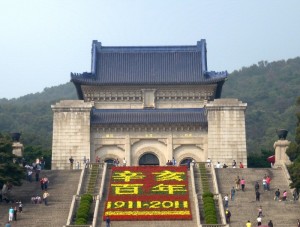
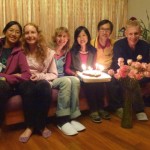
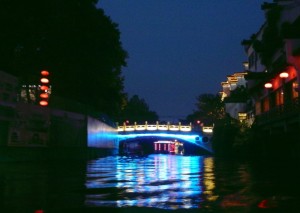
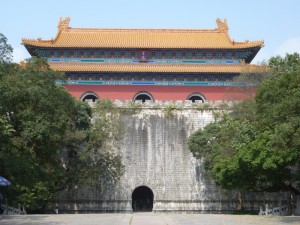
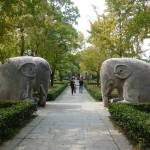
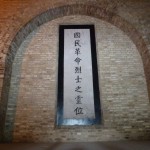
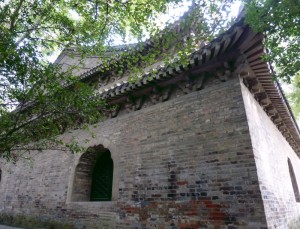
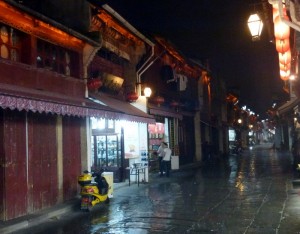
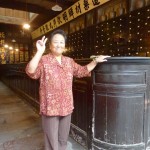
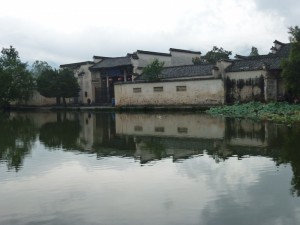
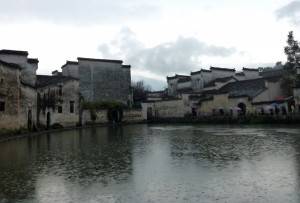
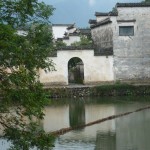
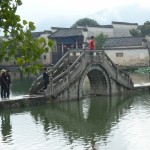
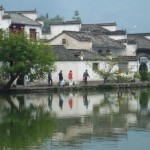
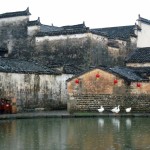
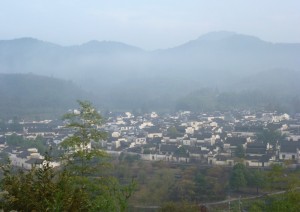
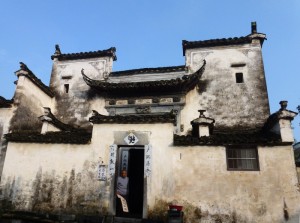
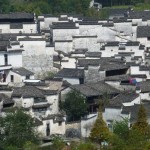
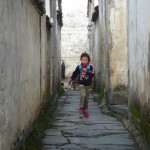
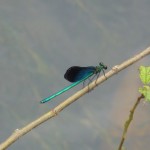
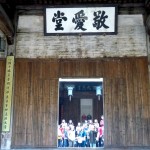
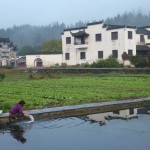
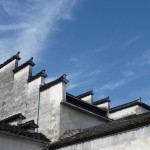
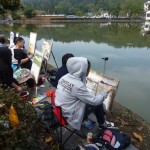
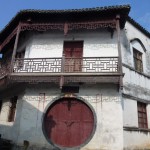
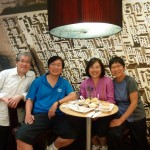
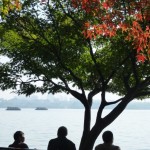
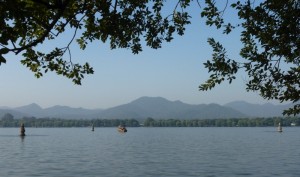
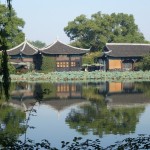
Hi Sarah:
Have to find time to read the entire blog on Nanjing, Hanzhou etc. Kai, Ming, YW, Doris and me went to that part of the China around 1980(?). They were then not open and developed and were very charming. I went to Hangzhou again a couple of years later and fell in love with it. I can’t imagine how it looks like now.
Hope you back is alright now.
Paulina